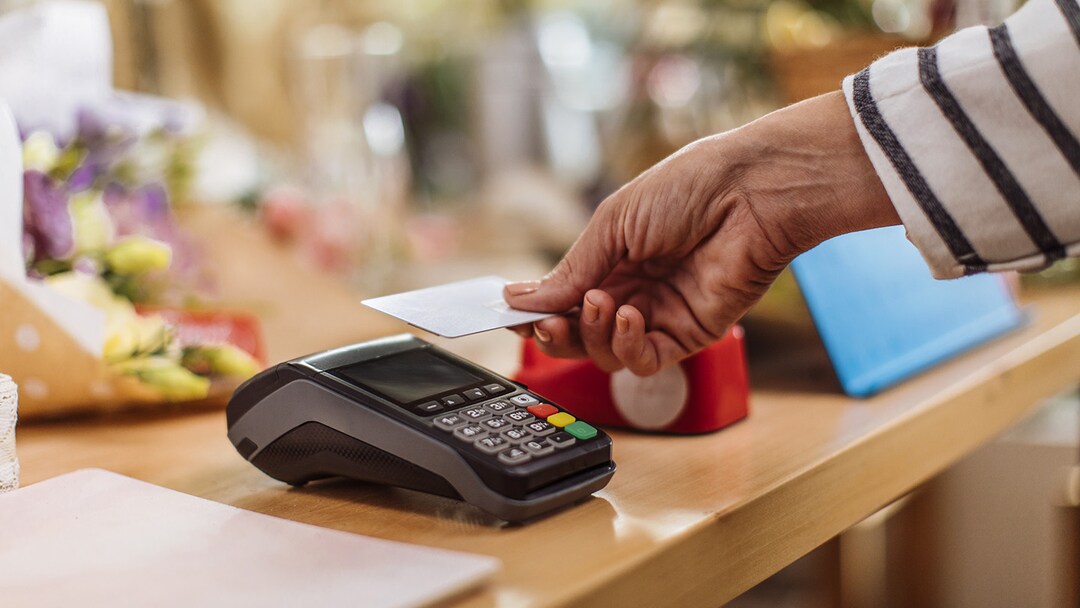5 things to know about contactless payments

Quick insights
- Contactless payments are transactions made by simply tapping or waving a card or device near a payment terminal.
- You may be able to make a contactless payment with a credit card, debit card, smartphone or wearable device.
- Contactless payments are typically a quick and secure way to pay.
With the rise of wearable devices and contactless payments, sometimes paying for things on the go can be as simple as waving your watch at checkout. In this article, we’ll cover what contactless payments are, how they work, their safety, how they compare to contactless credit cards and what the future of contactless payment may look like.
What are contactless payments?
Contactless payments are transactions made by simply tapping or waving a card or device near an eligible payment terminal. Contactless payments can be made with:
- Credit cards
- Debit cards
- Smartphones
- Wearable devices, like smart watches
Not all cards and not all payment terminals are contactless, but many are. Contactless payments have become increasingly popular and are accepted by many merchants, big and small.
How contactless payments work
Contactless payments use Near Field Communication (NFC) and Radio Frequency Identification (RFID) technology. This technology transmits your payment info to the card terminal without even needing to touch it. When your payment information is received, you’ll likely see a green light or hear a beep to signal that your payment went through.
Contactless payments are designed to be quick and convenient; you may not need to provide a signature or PIN to complete a contactless payment.
Safety features of contactless payments
Contactless payment technology is still relatively new, and because of that, it has been built with modern safety and security in mind. Contactless payments include the following safety features:
- Encryption: Your payment information is converted into a secure code used when transmitted to the payment device. That means your actual account or card numbers are not used in the transaction.
- Tokenization: A unique token is created and used instead of your payment information. The token is a one-time code that cannot be used again.
- Biometric verification: Contactless payment methods may require biometric or passcode verification. Face ID or a passcode—especially if you’re using a digital wallet—can be used to provide added security for contactless payments.
- Spending limits: Some contactless cards may put a spending cap on purchases to help prevent large fraudulent transactions. This is meant to provide additional security and limit your card’s usage should it be lost or stolen.
However, like all payment methods, contactless payments are not completely immune to fraud or theft. It is recommended to keep an eye on your transactions and account activity to help spot any potential fraudulent activity.
Contactless payments vs. contactless cards
Contactless credit cards and contactless payments are both ways of making transactions. Neither requires you to make physical contact between the payment device and the point-of-sale terminal. But here a few ways they differ and compare:
- Devices: Contactless cards are waved over a compatible card reader to make a payment. On the other hand, contactless payments can be made using a variety of devices, such as smartphones, smartwatches or other wearable devices.
- Payment apps: Contactless payments often involve the use of digital wallets or payment apps like Apple Pay, Google Pay or Samsung Pay. Contactless credit cards do not require an app, as the card itself is used to make the payment.
- Security: Both methods have important security features. Contactless credit cards use tokenization, making your payment information difficult to be stolen or replicated. Contactless payments via digital wallets also use tokenization, and may require additional authentication like a fingerprint, face ID or a passcode.
Many banks and credit card companies are now automatically issuing contactless cards. You can use them as a contactless card or add them to your digital wallet so you can make contactless payments.
The future of contactless payments
The use of contactless payments has been on the rise, especially since the COVID-19 pandemic fostered the desire for touchless transactions. Businesses are increasingly adopting contactless payment systems to meet consumer demand and improve the speed of transactions.
As technology continues to evolve, contactless payments are expected to become even more widespread. Innovations such as biometric authentication and advancements in wearable technology may help to bring more convenience and security to contactless payments.
In summary
Contactless payments are transactions made by tapping or waving a card or device near a payment terminal. You can make a contactless payment with a credit card, debit card, smartphone or wearable device. Contactless payments are typically a quick and secure way to pay, as they are widely accepted forms of payment and have become increasingly popular, especially since the COVID-19 pandemic.



